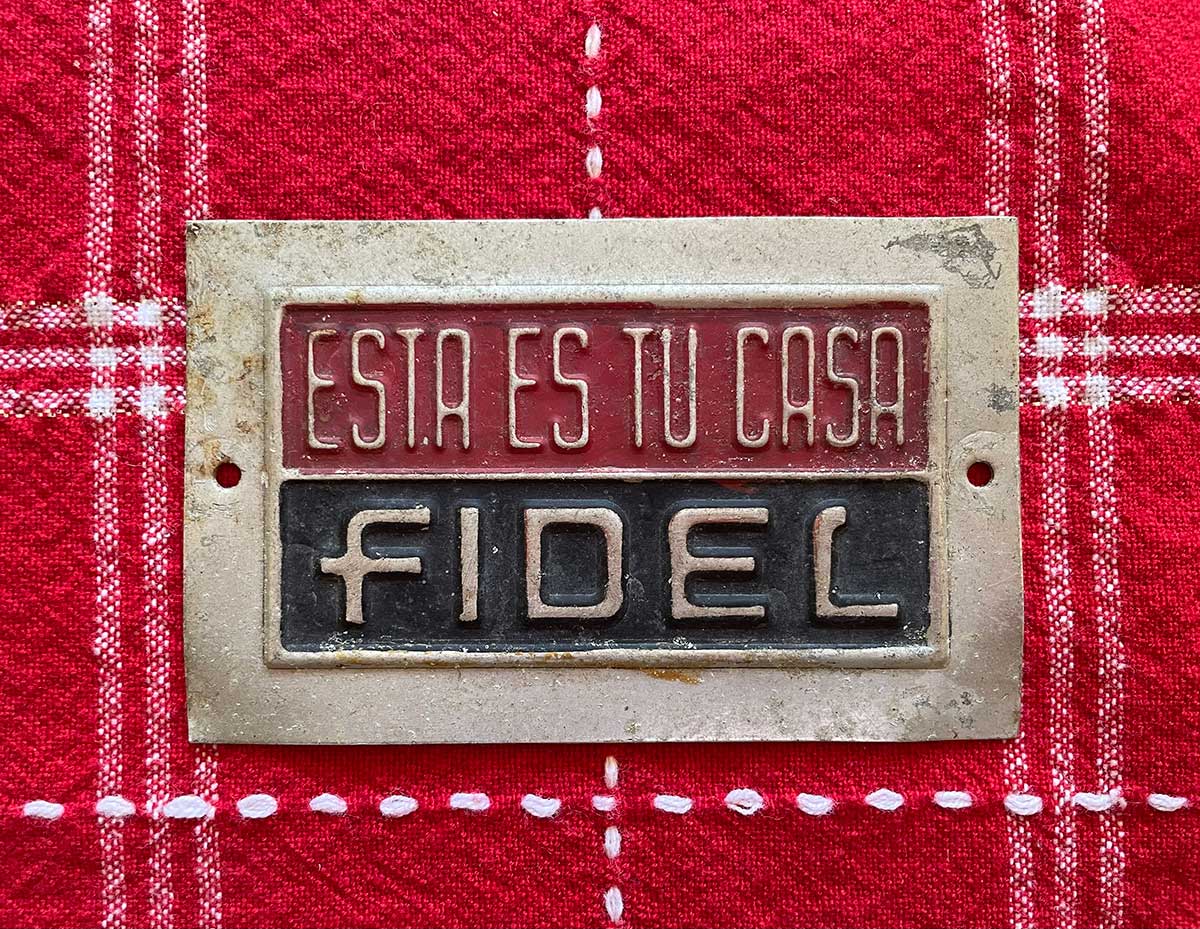Throughout 1959, the revolutionary government headed by Fidel Castro and a cabinet of top revolutionaries who had fought the urban war against Batista was enormously popular. Pro-capitalist and nationalist at the time, the government’s economic reforms wildly expanded opportunities for locally owned businesses, industries and small-to-medium-sized farms. Except for families of the high elite, many of whom were guilty of embezzling public money with the help of the dictator Batista, most Cubans believed that the future had never looked so bright. Testifying to this, people began displaying small plaques like these on their front doors. Sold in the spring and summer of 1959, the plaque invited Fidel Castro to stop in for a chat, lunch, Cuban espresso or virtually anything he might need! The idea that one’s house was now open to the most sought-after “bandit” in Cuba, as Batista had once called Fidel, united citizens in a common narrative of mutual opposition and solidarity with the opposition. However, nothing could have been further from the truth: during the years of struggle, when thousands of activists were tortured in police stations or murdered on the streets, safe houses were often impossible for the 26th of July Movement’s urban underground to find. Gift from Ernesto Chávez, Lillian Guerra Collection.
